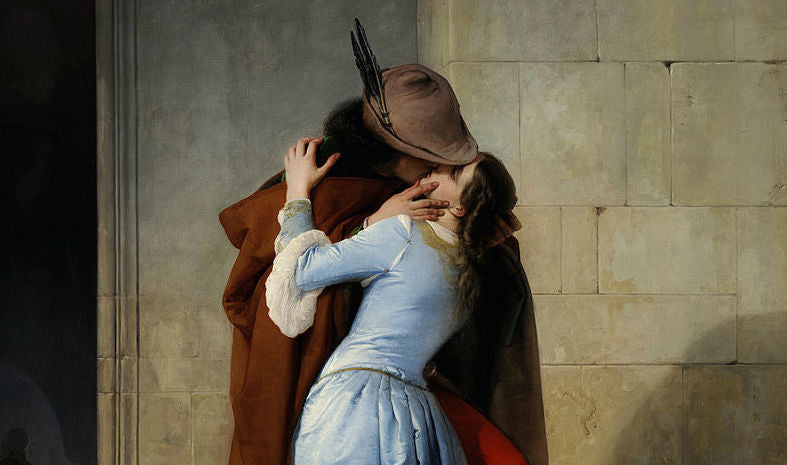
Life of Gustav Klimt, the secessionist painter who loved women
Roberto ZampieriShare
A leading exponent of Viennese Secessionism , of which he himself was the creator, Gustav Klimt was a disruptive figure for the painting of those years. A shy and unworldly personality, the artist deeply loved women, not only from the point of view of pictorial representation.
It seems, in fact, that his full-blown infidelity led him to have 14 children. The second of seven brothers, he was not the only one in the family to pursue an artistic career. Here is the biography of the Austrian painter.
Life of Gustav Klimt, the secessionist painter who loved women
Gustav Klimt was born on 14 July 1862 in Baumgarten , a suburb of Vienna, to a modest family. His father, a Bohemian immigrant, was a goldsmith and his mother was an opera lover. The second of seven brothers, Gustav, together with Ernst and Georg , pursued a career as a painter. At fourteen, Klimt attended the arts and crafts school of the Austrian Museum for Art and Industry.
Already as a young man, together with his brother Ernst and his friend Franz Matsch, he obtained the commission for the decoration of the courtyard of the Kunsthistorisches Museum . From this point on he began to work more or less constantly with his brother on various projects.

In 1880 he painted the four allegories of the Sturany Palace in Vienna and the ceiling of the Kurhaus in Karlsbad . Between 1886 and 1888 he was responsible for the decoration of the Burgtheater in Vienna. These commissions earned the three notoriety in artistic circles. This was a period of relative tranquility and economic serenity.
The mourning and the meeting with Emilie
However, the happiness of Klimt's private life suffered a serious blow. In 1892 his father died and only a few months later his younger brother Ernst also suddenly passed away. Klimt found himself, within a very short time, having to take care of both families. These two serious deaths inevitably left their mark on his artistic production as well.
Also in those years, the Austrian painter met Emilie Flöge , who would be close to Klimt until his death, despite the latter's repeated betrayals.
The Vienna Secession
Towards the end of the nineteenth century, with the first exhibition in 1898 , the artistic movement of the Viennese Secession was born, of which Klimt was the president. The exponents of what was an all-round cultural movement which involved not only painting but also other sectors of art and culture, had as their objective the creation of a style that distanced itself from the academic one. The Secessions introduced the stylistic innovations of Art Nouveau to Austria and Germany which were spreading throughout Europe at that time.
At the first Secession exhibition , in addition to those of Klimt, the works of Auguste Rodin, Puvis de Chavannes, Arnold Böcklin, Alfons Mucha and Fernand Khnopff were exhibited. The second exhibition would inaugurate the Secession Palace, specially designed by Joseph Maria Olbrich.
The decoration of the Aula Magna
The singular episode of the Aula Magna testifies to how much Klimt distanced himself from the canons of traditional painting, effectively breaking with academic patterns. In 1894 , the University of Vienna commissioned the artist to decorate the ceiling of the great hall on the Enlightenment theme of the triumph of Light over Darkness, to be developed across three faculties: Philosophy, Medicine and Law.
The three panels, which were destroyed in a fire, were harshly contested by the clients, who instead of representing the progress of culture, found themselves faced with a whirlwind of sensual bodies. The entire teaching staff protested in Parliament , so much so that Klimt decided to break the contract and return the advance already paid.
[caption id="attachment_8018" align="alignleft" width="300"]

"The Kiss" is one of Gustav Klimt's most famous paintings
Despite the lack of approval from academic circles, the Austrian painter found his patrons among the rich Jewish families of the Viennese bourgeoisie, lovers of avant-garde art.
The “golden” period
The visit to Ravenna in 1903 marks an important stage for Klimt's pictorial style. Observing the splendor of the Byzantine mosaics, rich in gold, the painter is deeply admired by the style. Klimt had already arrived at the two-dimensionality and linearism of the figures with the painting " Judith I " from 1901.
The two trips to Ravenna did nothing but accentuate the artist's choices which were already moving in that direction. From that moment on, gold acquires a greater expressive value. Klimt's golden age ended in 1909 with the painting “ Judith II ”.
The change of style and death
With the crisis of the Vienna Secession, Klimt approached the so-called Viennese Workshops . In this phase, having abandoned the elegance of the Art Nouveau lines, the painter concentrated on colour, which became brighter and more lively.

In 1911 Klimt received the first prize at the International Art Exhibition in Rome for “Death and Life”. Upon returning from a trip to Romania, on 11 January 1918, he suffered a stroke which led to his death. Klimt died on 6 February 1918 in Neubau.
Klimt's legacy
Trained stylistically with traditional painting canons, Gustav Klimt immediately knew how to emancipate himself, becoming the leading exponent of the Viennese Secession movement. Rather than faithfully representing reality, Klimt preferred to evoke it through his symbols.
The elegant and soft lines , the two-dimensionality of the shapes and the color characterize the style of the Austrian painter. Central to Klimt's works is the female figure . Even when they represent allegorical figures, women are visibly portrayed by characters from everyday life; sometimes they are prostitutes who are depicted with fluffy hairstyles and heavy makeup, or they are represented as femmes fatales, from whose faces an extraordinary inner strength shines through.
